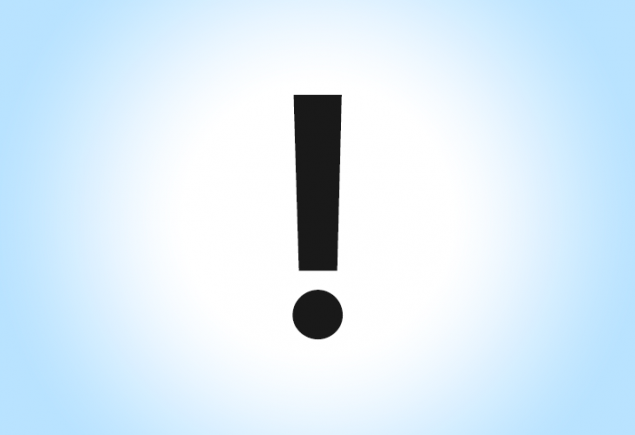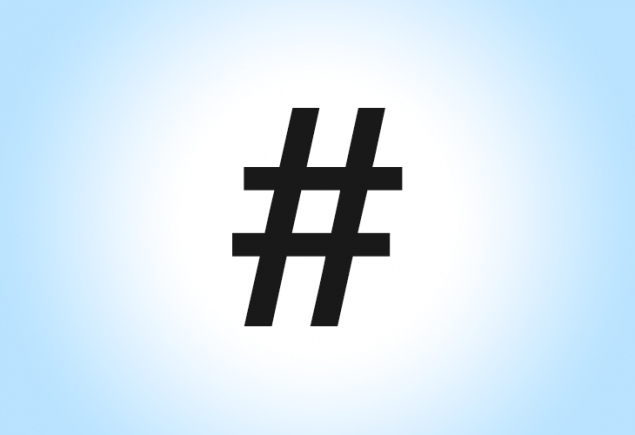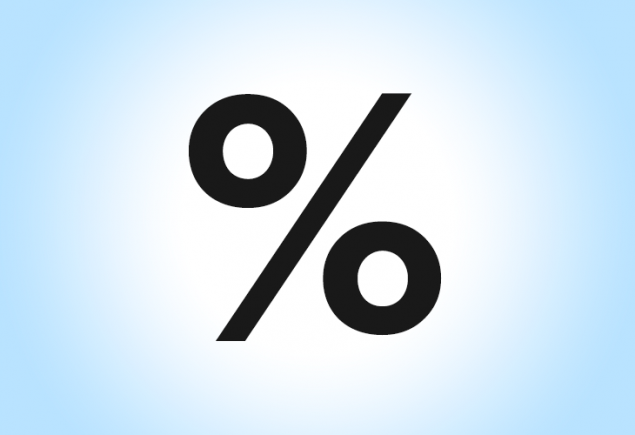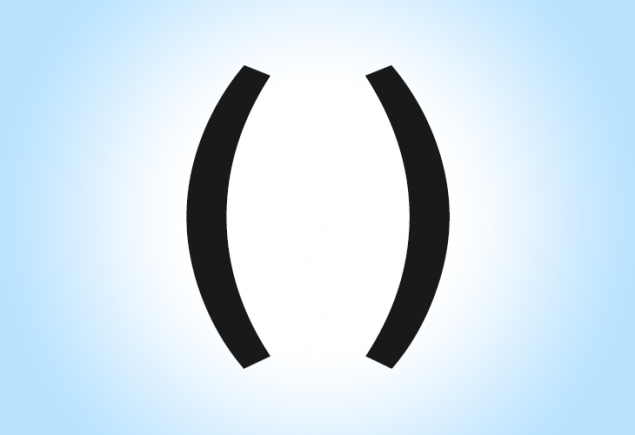10 interesting facts about where did the @, #,%, ~, and other characters
 Bashny.Net
Bashny.Net
With the emergence and development of the Internet, many printed characters appeared "second life." For example, what kind of online without a "dog"? The site, as usual, lost in the annals to find information about their origin, and that's what nakopal.1. The exclamation point "!" 
The exclamation point comes from the expression «note of admiration» (mark of astonishment). One theory of its origin, it was the Latin word for joy (Io), written with the letter «I» of the letter «o». For the first time the exclamation mark appeared in the "Catechism of Edward VI», published in London in 1553.
2. Dog or commercial floor "@"
The origin of this symbol is not known. The traditional hypothesis - the medieval contraction of the Latin preposition ad (meaning "to", "to", "to", "y", "when»).
In 2000, Giorgio Stabile, a professor of Sapienza, put forward another hypothesis. In a letter written by a Florentine merchant in 1536, I mentioned the price of one «A» of wine, and the letter «A» was decorated with curls and looked like "@" according to Stabile, it was an abbreviation for volume unit - a standard amphora.
In Spanish, Portuguese, French, @ symbol traditionally meant arroba - old Spanish measure of weight equal to 11 502 kg (12 in Aragon, 5 kg); the word comes from the Arabic "al-rub", which means "the fourth" (a quarter of a hundred pounds). In 2009, the Spanish historian Jorge Romance discovered reduction Arroba symbol @ in the Aragonese Taula de Ariza manuscript written in 1448, almost a century before Florence's letters, studied Stabile.
Similar to @ signs found in Russian books XVI-XVII centuries - in particular, on the cover sheet of Laws of Ivan the Terrible (1550). This is usually decorated with curl letter "az", indicating in Cyrillic numerals unit, in the case of Sudebnik - the first point.
3. Oktotorp or sharp '#'
Etymology and English orthography (octothorp, octothorpe, octatherp) controversial words.
According to some sources, the sign comes from the medieval cartographic tradition, where so designated village, surrounded by eight fields (hence the name «octothorp»).
In other news, it's a playful neologism employee Bell Labs Don Macpherson (born. Don Macpherson), which appeared in the early 1960s, from octo- (lat. Octo, Russian. Eight), the speaker of the eight "end" character, and - thorpe, refers to Jim Thorpe (medalist of the Olympic Games, which was interested in McPherson). However, Douglas Kerr (Eng. Douglas A. Kerr) in his article «The ASCII Character" Octatherp "» says «octatherp» created as a joke of his own, as well as Bell Labs engineers and Herbert John Shaak Utlautom. The publication «The Merriam-Webster New Book of Word Histories» (1991) gives the spelling «octotherp» as the original, and considers the telephone engineers its sponsors.
4. The semicolon ";"
The semicolon was first introduced by the Italian printer Aldus Manutius (Italian. Aldo Pio Manuzio; 1449 / 1450-1515), who used it to separate the opposing words and independent parts slozhnosochinёnnyh proposals. Shakespeare had to use a semicolon in your sonnets. In the Russian text the comma and semicolon appeared in the late XV century.
5. Percentage of "%"
The word "percent" comes from the Latin. «Pro centum», which means in translation "hundredth part". In 1685 in Paris the book "Guide to commercial arithmetic 'Mathieu de la Porte. At one point it was a question of percentages, which are then designated «cto» (abbreviated from cento). However, typesetter took this «cto» for printed roll and "%". So because of a typo that sign came into use.
6. The ampersand "&"
Authorship is credited ampersand Marcus Tullius Tiro, faithful servant and secretary of Cicero. Even after Tyrone became a freedman, he continued to write lyrics Cicero. And in '63 BC. e. He invented a system to speed up the rate of writing called "tironovskimi signs" or "tironovymi notes» (Notæ Tironianæ, originals did not survive), which were used until the XI century (so that at the same time feel more Tyrone and the founder of the Roman shorthand).
7. A question mark "?". 60,774,560
It is found in printed books from the XVI century, but to express the question he is fixed much later, only in the XVIII century.
Inscription sign comes from the Latin letters q and o (quaestio - search [response]). Originally written q over o, which are then transformed into a modern mark.
8. asterisk, asterisk or "*". 52,102,251
It was introduced in the 2nd century BC. e. in the texts of the ancient Library of Alexandria grammarian Aristophanes of Byzantium to indicate ambiguities.
9. The parentheses "()".
Parentheses appeared in 1556 Tartaglia (for radical expression) and later at Girard. Simultaneously Bombelli used as a starting corner brackets in the form of a letter L, and as a final - it is in inverted form (1550); such record was the ancestor of the square brackets. Braces offered Wyeth (1593). Yet most mathematicians then chose instead parentheses nadchёrkivat generated expression. In general use brackets introduced Leibniz.
10. Tilda «~» .
In most languages superscript tilde sign corresponds occurring letters n and m, which in medieval cursive often written above the line (above the previous letter) and Inscription degenerated into a wavy line.
via factroom.ru

The exclamation point comes from the expression «note of admiration» (mark of astonishment). One theory of its origin, it was the Latin word for joy (Io), written with the letter «I» of the letter «o». For the first time the exclamation mark appeared in the "Catechism of Edward VI», published in London in 1553.
2. Dog or commercial floor "@"

The origin of this symbol is not known. The traditional hypothesis - the medieval contraction of the Latin preposition ad (meaning "to", "to", "to", "y", "when»).
In 2000, Giorgio Stabile, a professor of Sapienza, put forward another hypothesis. In a letter written by a Florentine merchant in 1536, I mentioned the price of one «A» of wine, and the letter «A» was decorated with curls and looked like "@" according to Stabile, it was an abbreviation for volume unit - a standard amphora.
In Spanish, Portuguese, French, @ symbol traditionally meant arroba - old Spanish measure of weight equal to 11 502 kg (12 in Aragon, 5 kg); the word comes from the Arabic "al-rub", which means "the fourth" (a quarter of a hundred pounds). In 2009, the Spanish historian Jorge Romance discovered reduction Arroba symbol @ in the Aragonese Taula de Ariza manuscript written in 1448, almost a century before Florence's letters, studied Stabile.
Similar to @ signs found in Russian books XVI-XVII centuries - in particular, on the cover sheet of Laws of Ivan the Terrible (1550). This is usually decorated with curl letter "az", indicating in Cyrillic numerals unit, in the case of Sudebnik - the first point.
3. Oktotorp or sharp '#'

Etymology and English orthography (octothorp, octothorpe, octatherp) controversial words.
According to some sources, the sign comes from the medieval cartographic tradition, where so designated village, surrounded by eight fields (hence the name «octothorp»).
In other news, it's a playful neologism employee Bell Labs Don Macpherson (born. Don Macpherson), which appeared in the early 1960s, from octo- (lat. Octo, Russian. Eight), the speaker of the eight "end" character, and - thorpe, refers to Jim Thorpe (medalist of the Olympic Games, which was interested in McPherson). However, Douglas Kerr (Eng. Douglas A. Kerr) in his article «The ASCII Character" Octatherp "» says «octatherp» created as a joke of his own, as well as Bell Labs engineers and Herbert John Shaak Utlautom. The publication «The Merriam-Webster New Book of Word Histories» (1991) gives the spelling «octotherp» as the original, and considers the telephone engineers its sponsors.
4. The semicolon ";"

The semicolon was first introduced by the Italian printer Aldus Manutius (Italian. Aldo Pio Manuzio; 1449 / 1450-1515), who used it to separate the opposing words and independent parts slozhnosochinёnnyh proposals. Shakespeare had to use a semicolon in your sonnets. In the Russian text the comma and semicolon appeared in the late XV century.
5. Percentage of "%"

The word "percent" comes from the Latin. «Pro centum», which means in translation "hundredth part". In 1685 in Paris the book "Guide to commercial arithmetic 'Mathieu de la Porte. At one point it was a question of percentages, which are then designated «cto» (abbreviated from cento). However, typesetter took this «cto» for printed roll and "%". So because of a typo that sign came into use.
6. The ampersand "&"

Authorship is credited ampersand Marcus Tullius Tiro, faithful servant and secretary of Cicero. Even after Tyrone became a freedman, he continued to write lyrics Cicero. And in '63 BC. e. He invented a system to speed up the rate of writing called "tironovskimi signs" or "tironovymi notes» (Notæ Tironianæ, originals did not survive), which were used until the XI century (so that at the same time feel more Tyrone and the founder of the Roman shorthand).
7. A question mark "?". 60,774,560
It is found in printed books from the XVI century, but to express the question he is fixed much later, only in the XVIII century.
Inscription sign comes from the Latin letters q and o (quaestio - search [response]). Originally written q over o, which are then transformed into a modern mark.
8. asterisk, asterisk or "*". 52,102,251
It was introduced in the 2nd century BC. e. in the texts of the ancient Library of Alexandria grammarian Aristophanes of Byzantium to indicate ambiguities.
9. The parentheses "()".

Parentheses appeared in 1556 Tartaglia (for radical expression) and later at Girard. Simultaneously Bombelli used as a starting corner brackets in the form of a letter L, and as a final - it is in inverted form (1550); such record was the ancestor of the square brackets. Braces offered Wyeth (1593). Yet most mathematicians then chose instead parentheses nadchёrkivat generated expression. In general use brackets introduced Leibniz.
10. Tilda «~» .

In most languages superscript tilde sign corresponds occurring letters n and m, which in medieval cursive often written above the line (above the previous letter) and Inscription degenerated into a wavy line.
via factroom.ru
Tags
See also
Interesting facts about the world around us
"What do you think, where did people do? You descendant of a planet? ".
25 interesting facts about the kings
Gabor Mate on the root causes of drug abuse and how to fight it
4 glaring fact about how the food industry forges products (5 photos)
Interesting facts about how social networks affect us
7 interesting facts about the faceted glass
10 interesting facts about Shakespeare
7 the most interesting facts about the relationship between humans and cats
10 interesting facts about the movie "Men in Black - 3"
















